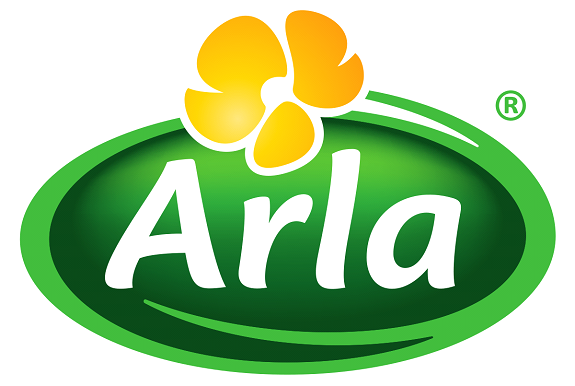The Rise of Tequila: A Spirited Journey
In the vast landscape of the wine and spirits industry, there’s one category that has been steadily climbing the ladder of popularity in recent years: Tequila.
Long regarded as the drink of choice for celebratory shots and margaritas, Tequila is now stepping into the limelight as a sophisticated and versatile spirit.
According to the new Tequila Category Assessment, IWSR projections indicate that global spirits volumes are set to grow at a CAGR of +2% between 2021 and 2026 – but tequila is predicted to exceed this comfortably, expanding at a CAGR of +7% over the same timescale.
In this blog post, we will explore the fascinating journey of Tequila’s rise as a category in the spirits industry and delve into the trending factors driving its growing demand.

The Roots of Tequila
To understand the meteoric rise of Tequila, we must first explore its origins. Tequila is from Mexico, where it has been produced. In fact, the first versions date back to 1,000 BC. It is made from the fermented and distilled juice of the blue agave plant, which thrives in the volcanic soils of Mexico. This unique plant and terroir combination give Tequila its distinct flavor profile, setting it apart from other spirits.
Historically, Tequila was seen as a rustic, working-class drink in Mexico and was often associated with wild nights and revelry. However, over the years, Tequila has undergone a transformation, emerging as a symbol of Mexican culture and craftsmanship.

Craftsmanship and Premiumization
One of the key factors driving the rise of Tequila is the growing appreciation for craftsmanship and premiumization in the spirits industry. Tequila producers have recognized the demand for high-quality, artisanal products, and many have shifted their focus to create premium Tequilas that appeal to discerning palates.
The rise of craft Tequila brands has introduced consumers to a wide range of options, from blanco (unaged) to reposado (aged) and añejo (extra-aged) Tequilas. Each category offers a unique flavor profile and aging process, allowing consumers to explore the complexities of this spirit. These premium Tequilas often come with higher price tags, but consumers are willing to pay for the quality and craftsmanship they offer.

Cocktail Culture and Mixology
Tequila has also benefited from the global cocktail renaissance. Bartenders and mixologists worldwide have embraced Tequila as a versatile base for creating innovative and flavorful cocktails. Classic drinks like the Margarita and the Paloma continue to be popular, but new and exciting Tequila-based concoctions are constantly emerging.
The craft cocktail movement has elevated the status of Tequila, positioning it as a spirit that can be sipped and savored as well as mixed into creative libations. This shift has opened a world of possibilities for Tequila enthusiasts, encouraging them to explore its diverse flavor profiles and experiment with new cocktail recipes.
Sustainability and Agave Conservation
In today’s world, sustainability is a hot-button issue, and the Tequila industry is no exception. Tequila production relies heavily on the blue agave plant, which takes several years to mature. To meet the growing demand for Tequila, agave cultivation has expanded rapidly, leading to concerns about agave sustainability.
To address these concerns, many Tequila producers are adopting sustainable practices, such as organic farming and agave conservation efforts. These initiatives not only help protect the environment but also resonate with consumers who are increasingly conscious of the impact of their consumption choices.
Celebrity and Cultural Influences
Another factor contributing to the rise of Tequila is the influence of celebrities and pop culture. Many celebrities, including actors, musicians, and athletes, have launched their own Tequila brands or invested in existing ones. Their endorsements and involvement in the industry have brought Tequila into the mainstream and piqued the curiosity of their fan bases.
Moreover, Tequila has become synonymous with Mexican culture and celebrations. Cinco de Mayo, Day of the Dead, and other Mexican holidays have become opportunities for people worldwide to embrace Tequila as a symbol of festivity and camaraderie.
The Global Tequila Boom
The global demand for Tequila has surged in recent years, with export figures reflecting this remarkable growth. In 2020, despite the challenges posed by the COVID-19 pandemic, Tequila exports from Mexico reached a record high, demonstrating the resilience and enduring popularity of this spirit.
In the United States, Tequila has become the fastest-growing spirits category, outpacing other well-established options like vodka and whiskey. The rise of Tequila bars, dedicated Tequila menus at restaurants, and Tequila-focused events all contribute to its growing presence in the American beverage landscape.

The Future of Tequila
As we look ahead, it’s clear that the rise of Tequila in the spirits industry is far from over. The category continues to evolve, with new innovations, flavors, and expressions constantly emerging. With its versatility, cultural significance, and the commitment of producers to sustainability and quality, Tequila is poised for a bright future.
Conclusion
In conclusion, the rise of Tequila as a category is a testament to the enduring appeal of this Mexican spirit. From its humble beginnings as a rustic drink to its current status as a symbol of craftsmanship and celebration, Tequila has captured the hearts and palates of people worldwide. Whether sipped neat, mixed into a cocktail, or enjoyed in a shot with friends, Tequila is here to stay, and its journey is one worth toasting to. So, the next time you reach for a glass of Tequila, savor the rich history and exciting future of this spirited beverage.


















